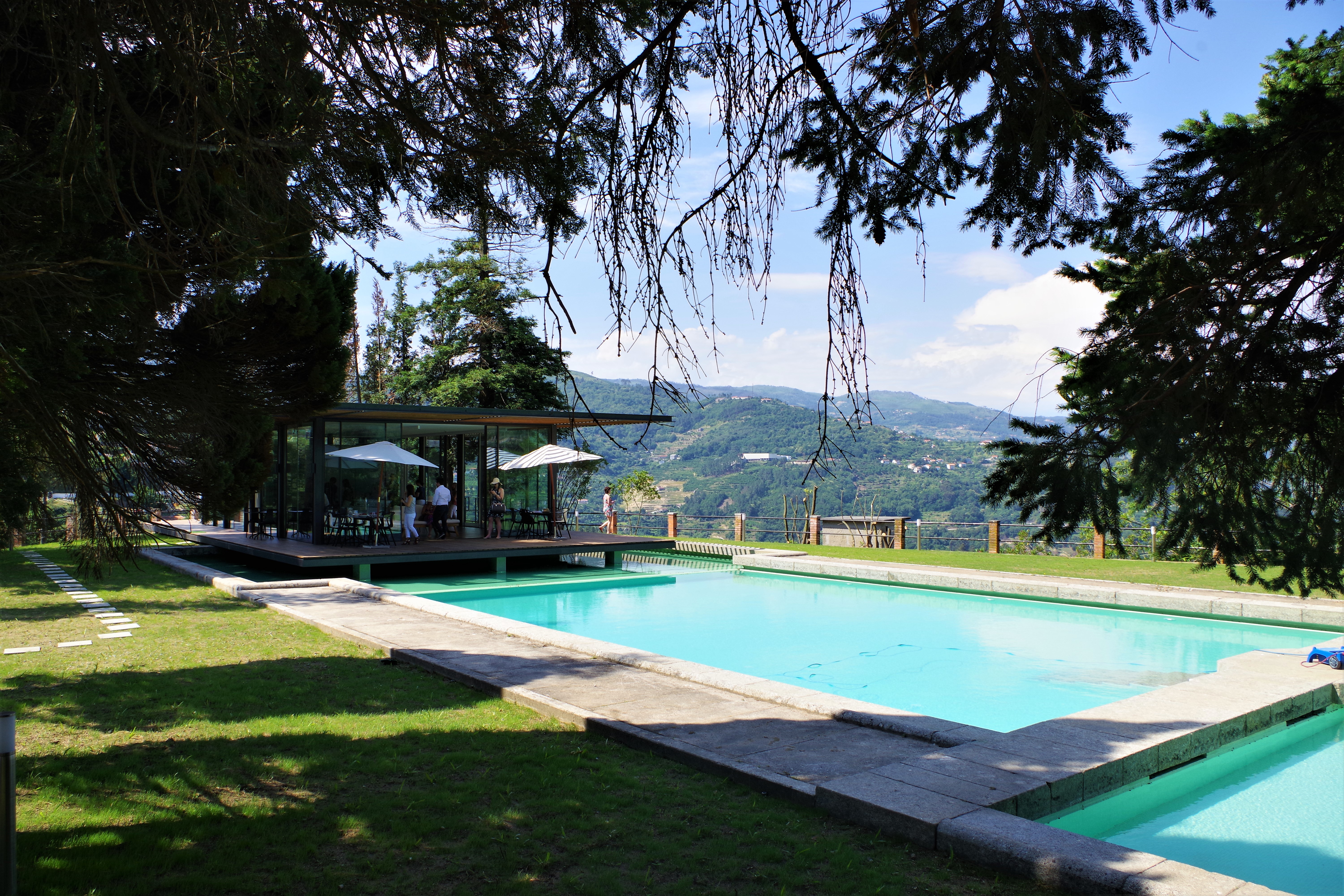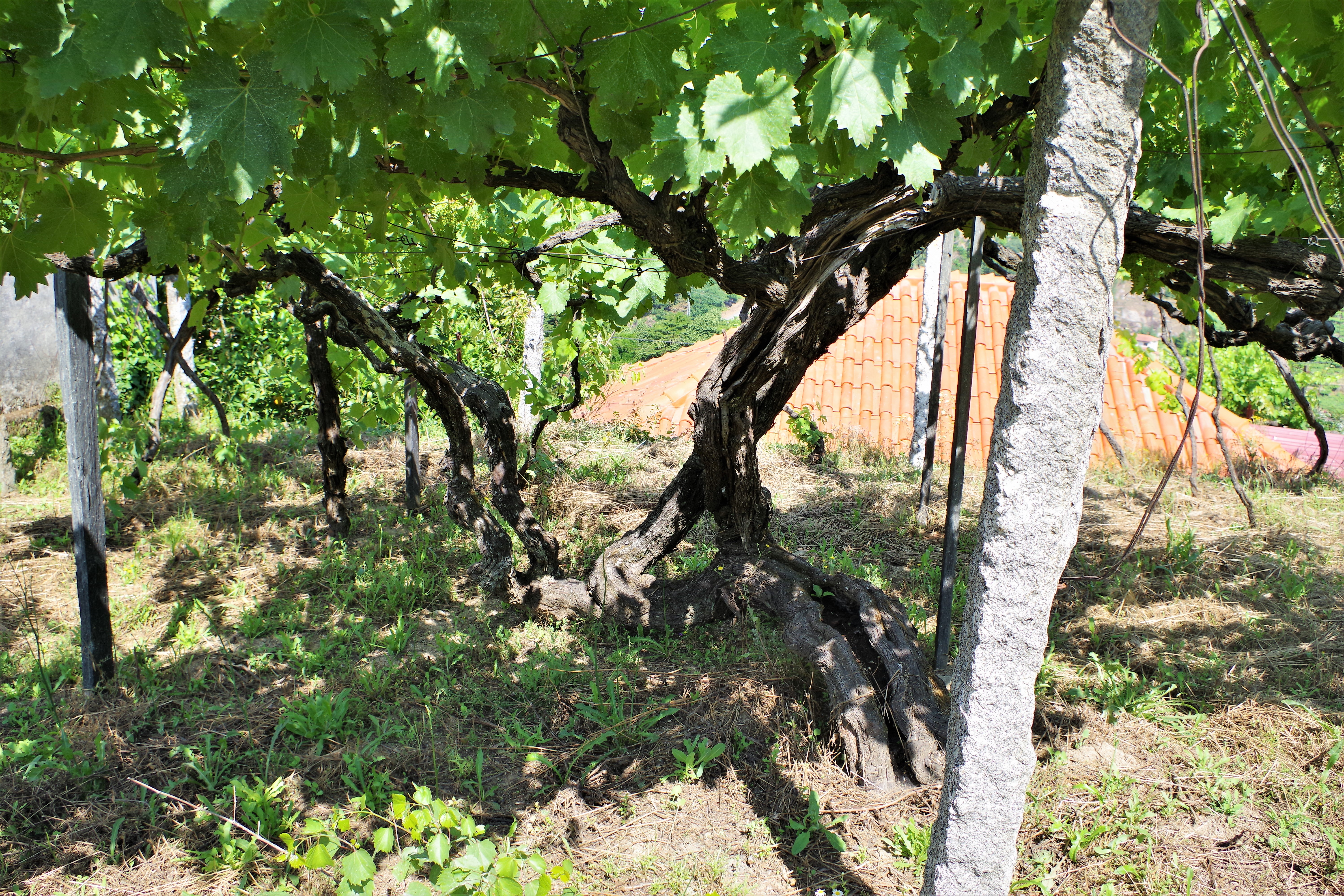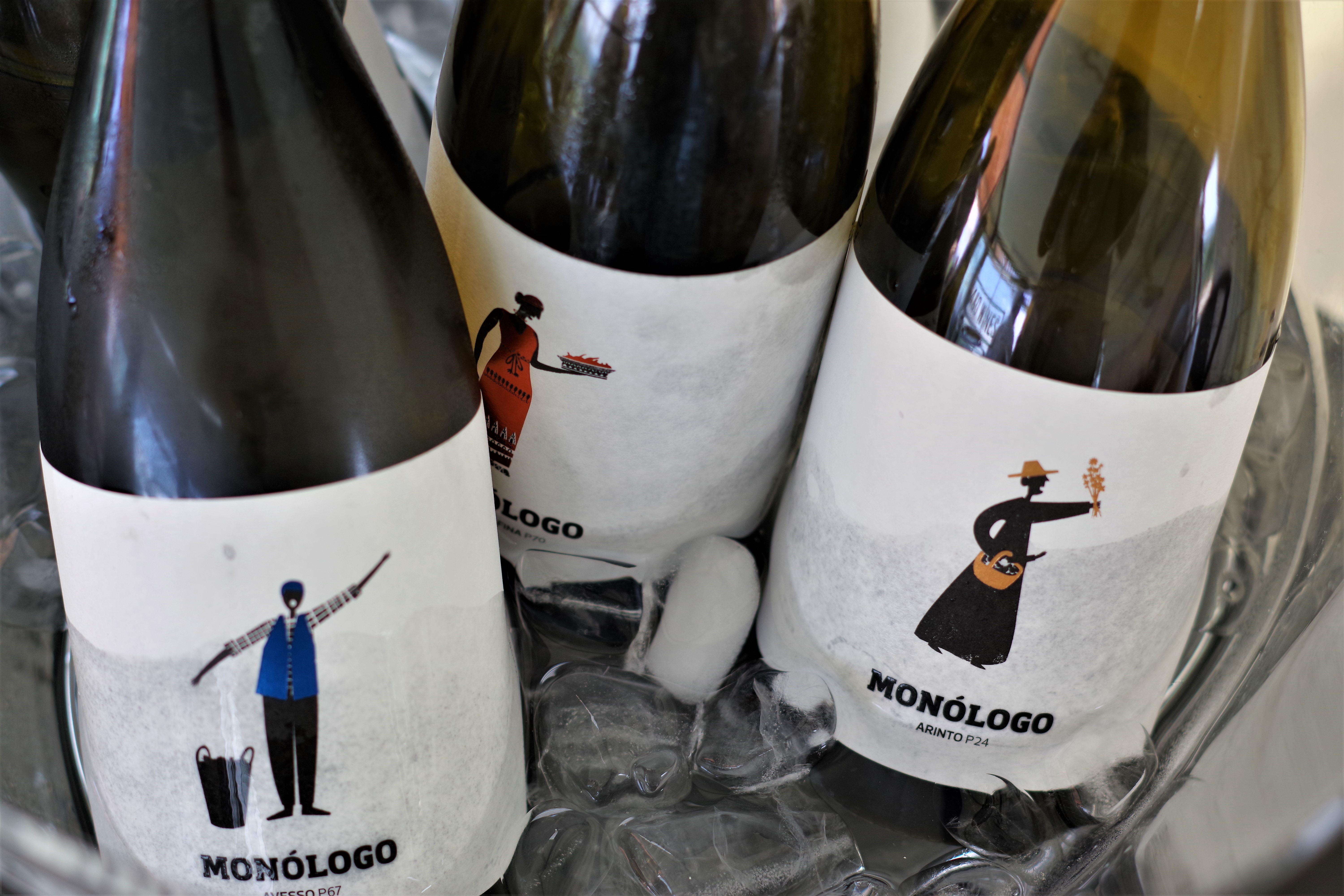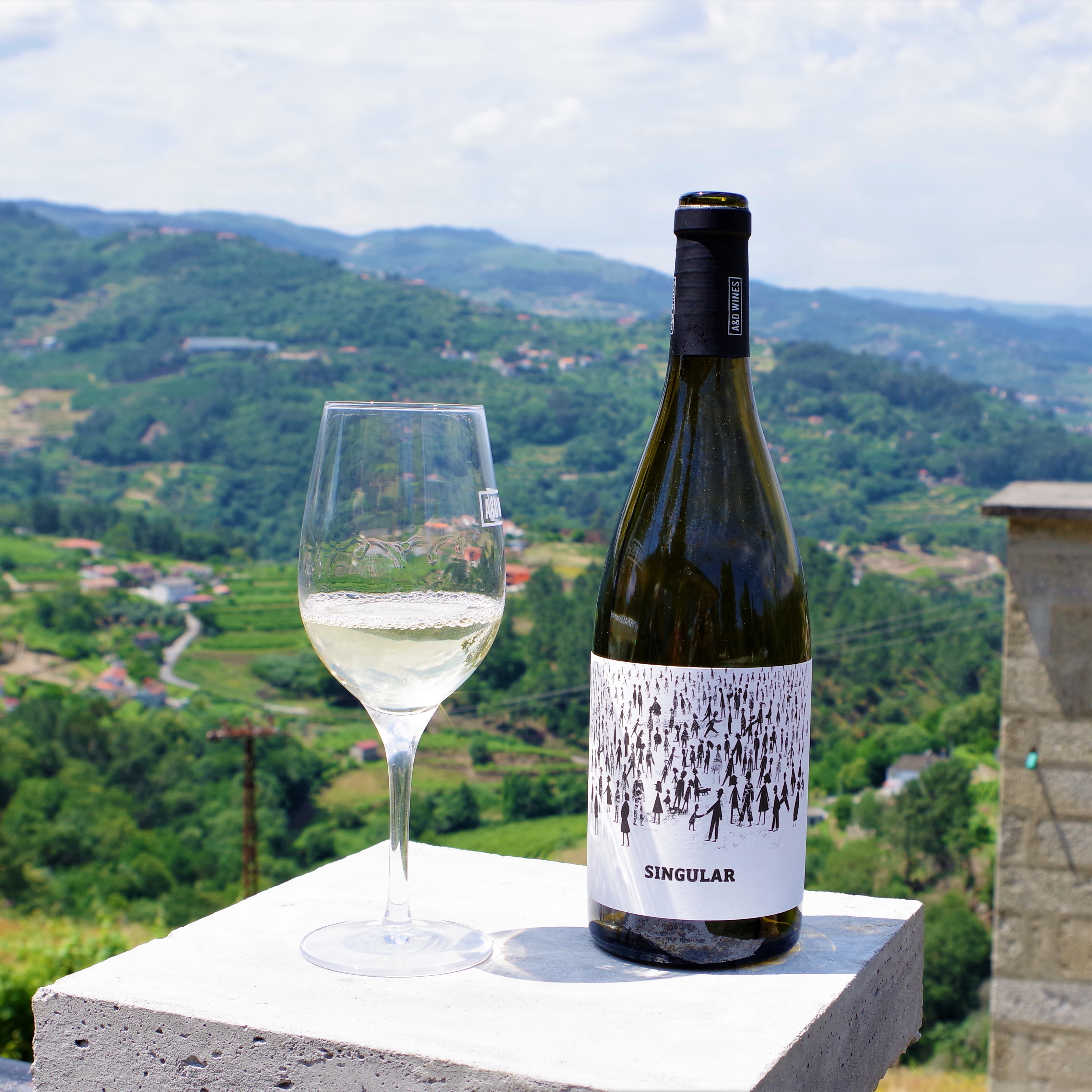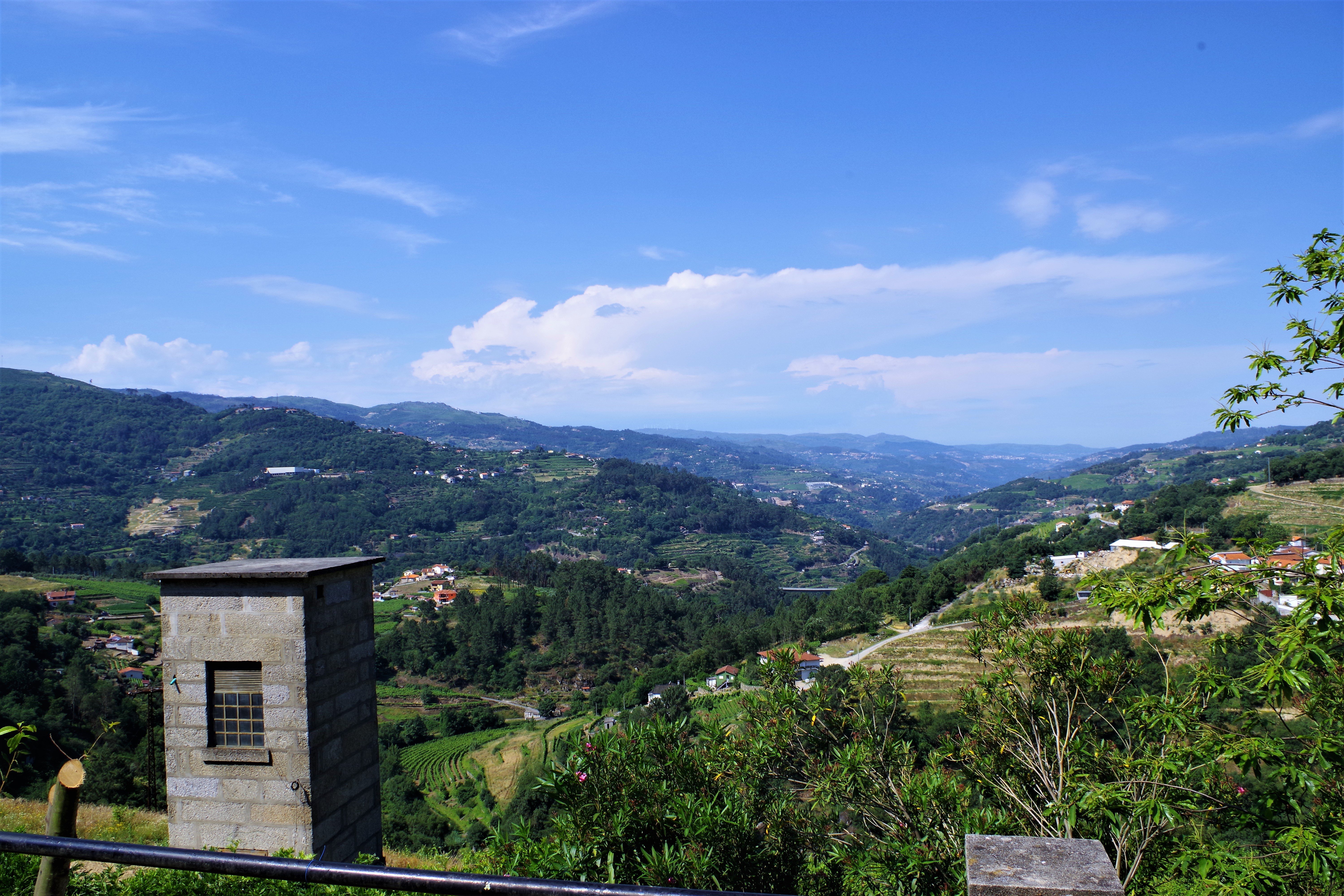Located in the sub-region of Baião, on top of the hill, overlooking the valley with a clear distinction between the Douro and the Vinho Verde, A&D wines is one hell of a gorgeous estate.
Quinta de Santa Teresa was acquired in 2015 by Alexandre Gomes and his wife Dialina, two passionate engineers. With the casa de Arrabalde and Quinta dos Espinhoso that they already owned, it’s a total of 45 ha which they completely transformed in a short amount of time into A&D wines project. Dialina remembers when they first arrived, at the estate, before any organic process was triggered, it was lifeless and weeded. Now, the estate is lush, filled with a diversity of flowers and animals. Infrastructures are now being put in place to encourage wine tourism and make the most of this unique location.
They even found a more than 200 years old Avesso Vine. Baião is the home of this superb and rich variety. It’s not the only old vines of the estate and they are a very important part of the A&D style.
Casa do Arrabalde, 2017
Deep floral bouquet with an intense and mouthwatering acidity. The texture is fresh and long lasting with an amazing crispness.
Espinhosos, 2012
Espinhosos is a blend of Avesso and chardonnay. It has a deeper color. It’s also floral but also with a lovely wild honey aromas. The acidity is screeching but rounded by the chardonnay in the blend. It’s very slightly carbonated as the style of A&D wines does not put a priority on bubbles.
💙Monologo Arinto P24, 2017
Monologo is the newest references of the estate. They started with the 2015 vintage to showcase singular unique parcels with specific varietals. The Arinto is extremely vibrant with pitted fruit aromas and a strong phenolic character.
💙Monologo Avesso P67, 2017
The Avesso is very aromatic. It showcases complexity yet with delicacy. There’s slight hints of bruised pear, lemon pie and apricot but the taste is so integrated that it is difficult to pinpoint exactly the aromas. Again, a screeching acidity and lovely granitic texture makes it very refreshing. It is slightly carbonated, but I believe the wine doesn’t need it at all.
Monologo Sauvignon Blanc P704, 2017
The Sauvignon Blanc is very different from the other wines of the estate. It has some sweet notes and the same style you may find in some Douro whites. It’s a greenish, tart and lean wine.
💙Monologo Malvasia Fina, P70, 2017
The skin contact is very apparent on this wine. It has an almost buttery, brioche style but still as fresh as it can get. A slight smokiness brings everything together. Malvasia Fina is not very common in Vinho verde but I felt this expression was impressive from its tight tension.
💙Singular
This is a full-bodied blend, the bolder wine of all the portfolio of the estate. It’s made with 50% of very old vines. It has a filling and coating textured with a bright lingering finish. The warmth of the region can be sensed in the concentration of the flavors.
Situé dans la sous-région de Baião, au sommet de la colline, surplombant la vallée avec une nette distinction entre le Douro et le Vinho Verde, A & D wines est un domaine singulier et de toute beauté.
Quinta de Santa Teresa a été acquise en 2015 par Alexandre Gomes et son épouse Dialina, deux ingénieurs passionnés. Avec casa de Arrabalde et Quinta dos Espinhoso qu’ils possédaient déjà , c’est un total de 45 ha qu’ils ont complètement transformé en un court laps de temps. Dialina se souvient quand ils sont arrivés, au domaine, avant que tout le processus organique ne soit enclenché, il était sans vie et désherbé. Maintenant, le domaine est luxuriant, rempli d’une diversité de fleurs et d’animaux. Des infrastructures sont en train d’être mises en place pour encourager l’oenotourisme et tirer le meilleur parti de cet endroit unique.
Ils ont même trouvé une vigne d’Avesso de plus de 200 ans. Baião est supposément le lieu d’origine de cette variété superbe et riche. Ce ne sont pas les seules vieilles vignes du domaine et elles sont une partie très importante du style A & D.
Casa do Arrabalde, 2017
Bouquet floral profond avec une acidité intense et alléchante. La texture est fraîche et durable avec un croquant satisfaisant.
Espinhosos, 2012
Espinhosos est un mélange d’Avesso et de Chardonnay. Il a une couleur plus profonde. C’est aussi floral mais avec de beaux arômes de miel sauvage. L’acidité est criarde mais arrondie par le chardonnay dans l’assemblage. Il est très légèrement gazéifié car le style des vins A & D ne privilégie pas les bulles.
💙Monologo Arinto P24, 2017
Monologo est la nouvelle référence du domaine. Ils ont commencé avec le millésime 2015 pour mettre en valeur des parcelles uniques avec des cépages spécifiques. L’Arinto est extrêmement dynamique avec des arômes de fruits à noyaux et un fort caractère phénolique.
💙Monologo Avesso P67, 2017
L’Avesso est très aromatique. Il met en valeur sa complexité mais avec délicatesse. Il y a de légères notes de poire meurtrie, de tarte au citron et d’abricot, mais le goût est tellement intégré qu’il est difficile d’identifier exactement les arômes. Encore une fois, une acidité criarde et une belle texture granitique le rendent très rafraîchissant. Il est légèrement gazéifié, mais je crois que le vin n’en a pas du tout besoin.
Monologo Sauvignon Blanc P704, 2017
Le sauvignon blanc est très différent des autres vins du domaine. Il a quelques notes douces et le même style que vous pouvez trouver dans certains blancs du Douro. C’est un vin verdâtre, acidulé et maigre.
💙Monologo Malvasia Fina, P70, 2017
Le contact avec la peau est très apparent sur ce vin. Il a un style brioché presque beurré mais toujours aussi frais que possible. Une légère fumée apporte un équilibre à l’ensemble. Le Malvasia Fina n’est pas très commun dans le Vinho verde mais j’ai trouvé cette expression impressionnante de sa tension serrée.
💙Singular
C’est un mélange corsé, le vin le plus audacieux de tous le portfolio du domaine. Il est fait avec 50% de très vieilles vignes. Il a une texture très englobante avec une finition persistante et brillante. La chaleur de la région peut être perçue dans la concentration des saveurs.
